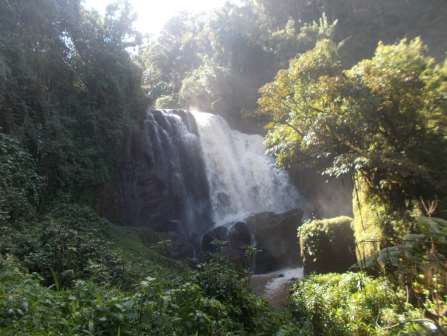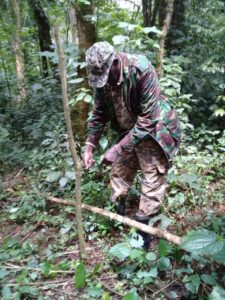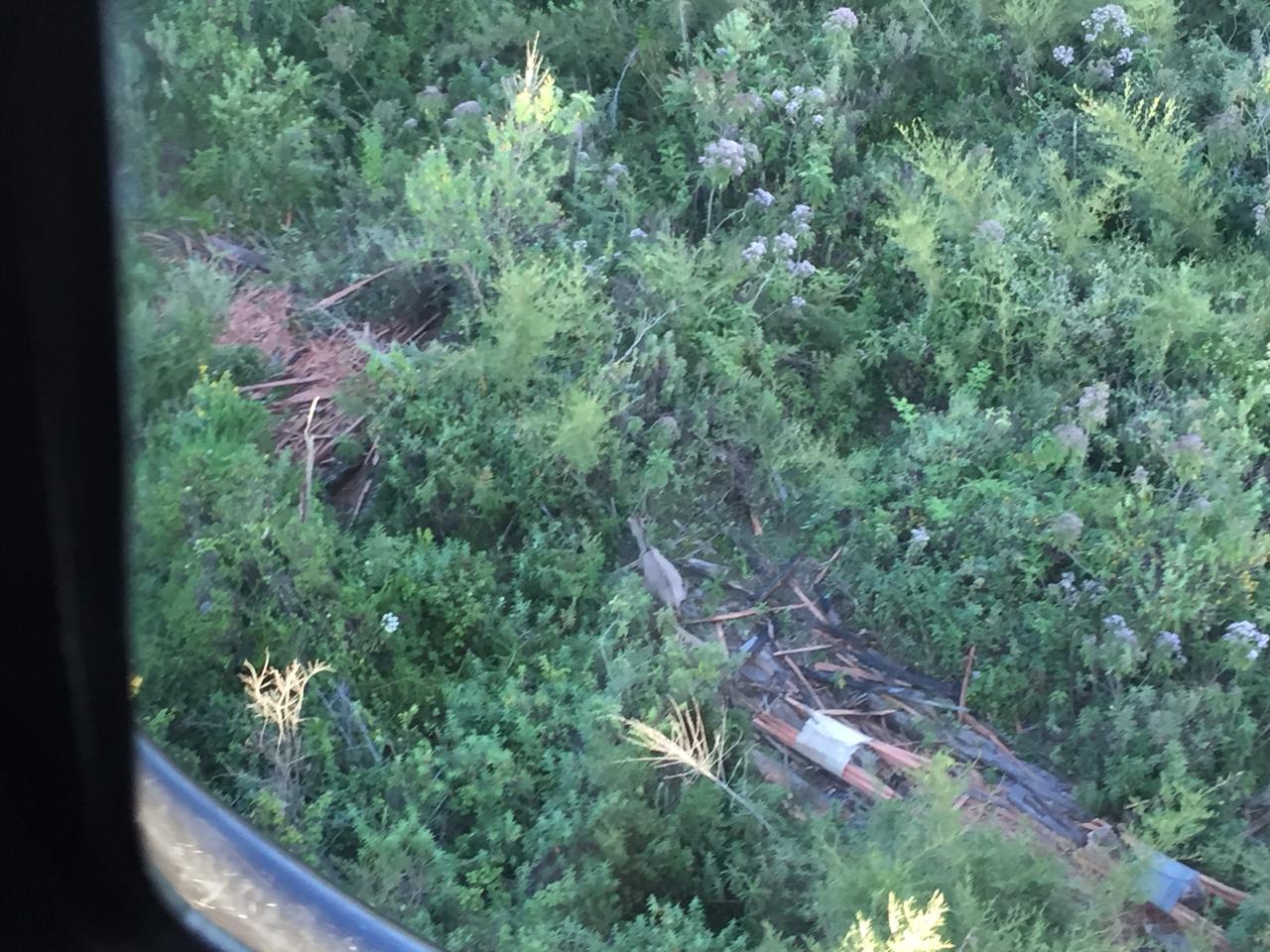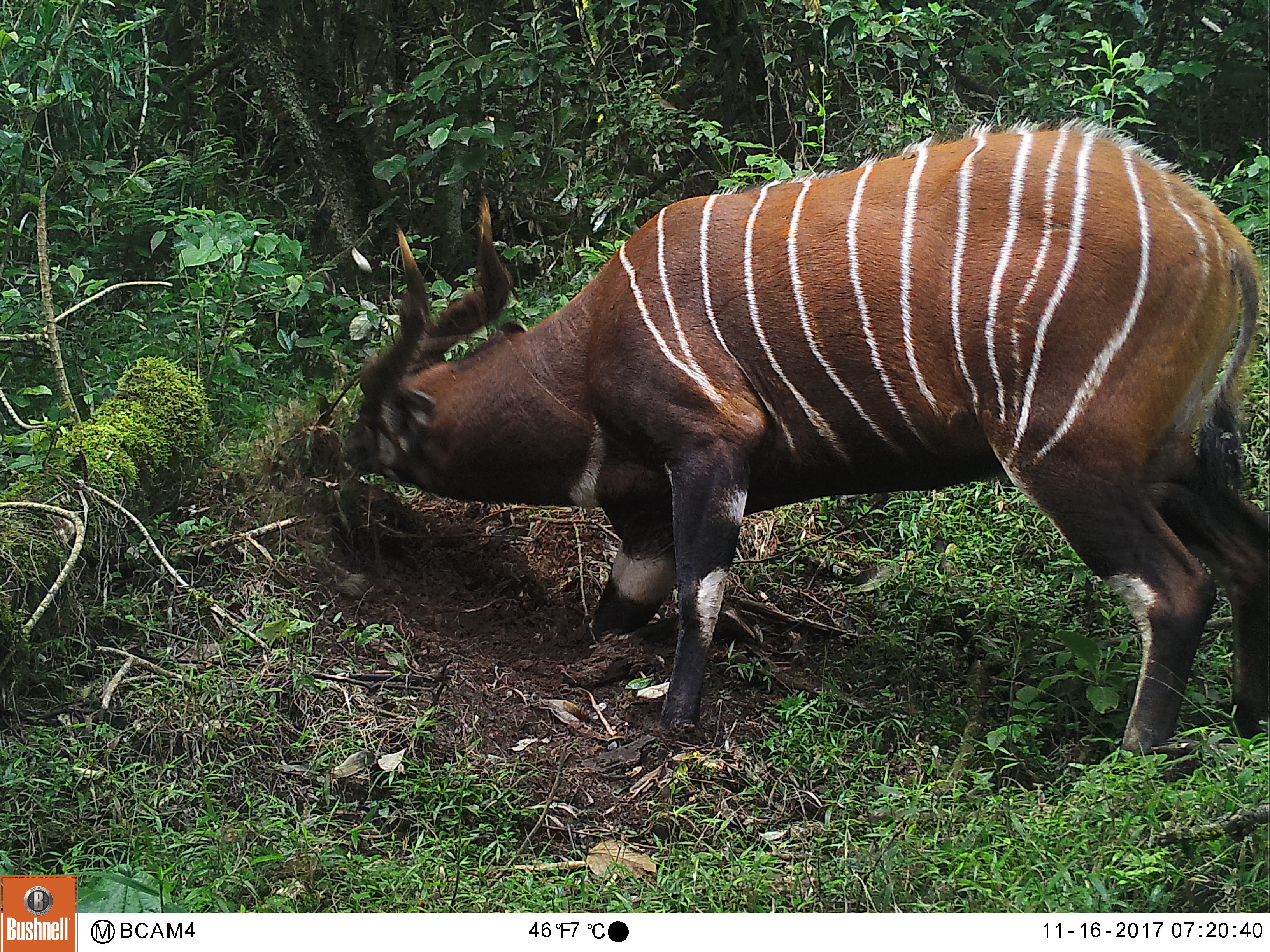Mara Elephant Project is pleased to announce that we’ve received support from the Indianapolis Zoological Society, Inc. for the protection of Mau Forest elephants for two years. The elephant carrying capacity of forests in Kenya is heavily threatened by anthropogenic pressures (i.e. land encroachment for settlement and forest degradation through grazing, fires, illegal logging for timber, charcoal and firewood, and wildlife poaching). Although forests may contain a quarter of Kenya’s total elephant population, knowledge on the status of forest-dwelling elephant in Kenya is outdated and of poor reliability (Thouless, 2016).
 A photo taken by MEP CEO of the beauty of the Mau Forest.
A photo taken by MEP CEO of the beauty of the Mau Forest.
 The Indianapolis Zoo is working with partners, like MEP, around the globe to save wildlife and their habitats. So, it’s fitting MEP is receiving support for the protection of the Mau Forest elephants that includes their daily monitoring and research. The movements of elephants in the Mau Forest have never been studied until 2017 when MEP collared the first two candidates in the eastern portion. These elephants have provided an immense amount of data for elephant movements. We’ve not only been able to monitor them daily to ensure the well-being of not just them, but their herd, we’ve also used their data to create geo-fences around the most vulnerable bordering farms thus alerting us when human-elephant conflict mitigation is needed. Connecting the elephant movement data between the eastern and western portion of the Mau Forest is also important, which is why having additional elephant candidates in the western portion of the forest would show a complete picture.
The Indianapolis Zoo is working with partners, like MEP, around the globe to save wildlife and their habitats. So, it’s fitting MEP is receiving support for the protection of the Mau Forest elephants that includes their daily monitoring and research. The movements of elephants in the Mau Forest have never been studied until 2017 when MEP collared the first two candidates in the eastern portion. These elephants have provided an immense amount of data for elephant movements. We’ve not only been able to monitor them daily to ensure the well-being of not just them, but their herd, we’ve also used their data to create geo-fences around the most vulnerable bordering farms thus alerting us when human-elephant conflict mitigation is needed. Connecting the elephant movement data between the eastern and western portion of the Mau Forest is also important, which is why having additional elephant candidates in the western portion of the forest would show a complete picture.
“Our commitment to conservation begins locally in Indiana and reaches around the world. Given the immense pressures facing elephants across Africa, this grant speaks to the importance of protecting them in the Mara ecosystem. We are privileged and honored to support the work of our remarkable colleagues at MEP who are making an authentic difference for elephant conservation.” Indianapolis Zoo President Dr. Rob Shumaker
Dr. Jake Wall, MEP’s director of research and conservation, leads the detailed analysis of the data collected from collared elephants and others that MEP has collared and monitored over the last six years. Combining this data with other relevant data sets will enable MEP to better understand the threats faced by elephants and the habitat upon which they depend. Collecting additional movement data on elephants in the Mau Forest would ensure MEP is able to establish more of a ranger presence in the forest. A larger ranger presence in the Mau Forest will not only reduce the percentage of illegally killed elephants (PIKE) in the forest by rooting out illegal logging operations, arresting poachers and mitigating human-elephant conflict, it will also ensure the well-being of communities bordering this endangered habitat and the wildlife living within.
 The on-the-ground monitoring of MEP’s collared elephants means that a permanent ranger presence is established in the forest which will contribute to shutting down illegal logging sites and help with intelligence gathering, which will lead to more arrests of poachers operating in the forest and a reduction in the rate at which the forest is being destroyed. The other main issue MEP is addressing is that the communities surrounding this area have not been engaged in a meaningful way in regard to conserving wildlife. MEP has successfully been able to engage similar communities in the Mara by having a presence in their areas. They start to view our organization as the first responders when either an elephant is hurt, a community member is hurt, or a field of crops is being raided. We gain capital with communities when we’re able to rapidly respond to address their needs and collaring and monitoring elephants is a part of what ensures that response. The goal of our efforts in the Mau Forest is to secure the surrounding communities and protect them from crop raiding elephants, poachers, middlemen and ensure the forest that they share their space with is protected for years to come. Through these actions the community will be empowered and supported to live alongside elephants and other wildlife peacefully. The Indy Zoo’s contribution is also paying for local rangers to be employed in the Mau Forest, in addition to the David Sheldrick Wildlife Trust funded Mau De-Snaring Unit (pictured left), who are chosen directly from the community.MEP is also investigating income generating activities for the communities living along the forest’s edge like bee keeping. The Mau Forest provides a wealth of flora and fauna and ample water sources, which bees really like, so bee keeping is a very real possibility for these communities. Mara Elephant Project supports the Zoo in their philosophy that local people are an essential part of the conservation equation; therefore, sustainable co-existence is of paramount concern.
The on-the-ground monitoring of MEP’s collared elephants means that a permanent ranger presence is established in the forest which will contribute to shutting down illegal logging sites and help with intelligence gathering, which will lead to more arrests of poachers operating in the forest and a reduction in the rate at which the forest is being destroyed. The other main issue MEP is addressing is that the communities surrounding this area have not been engaged in a meaningful way in regard to conserving wildlife. MEP has successfully been able to engage similar communities in the Mara by having a presence in their areas. They start to view our organization as the first responders when either an elephant is hurt, a community member is hurt, or a field of crops is being raided. We gain capital with communities when we’re able to rapidly respond to address their needs and collaring and monitoring elephants is a part of what ensures that response. The goal of our efforts in the Mau Forest is to secure the surrounding communities and protect them from crop raiding elephants, poachers, middlemen and ensure the forest that they share their space with is protected for years to come. Through these actions the community will be empowered and supported to live alongside elephants and other wildlife peacefully. The Indy Zoo’s contribution is also paying for local rangers to be employed in the Mau Forest, in addition to the David Sheldrick Wildlife Trust funded Mau De-Snaring Unit (pictured left), who are chosen directly from the community.MEP is also investigating income generating activities for the communities living along the forest’s edge like bee keeping. The Mau Forest provides a wealth of flora and fauna and ample water sources, which bees really like, so bee keeping is a very real possibility for these communities. Mara Elephant Project supports the Zoo in their philosophy that local people are an essential part of the conservation equation; therefore, sustainable co-existence is of paramount concern.
 Elephants in the Mau Forest moving through an illegal logging operation as seen by the MEP helicopter.
Elephants in the Mau Forest moving through an illegal logging operation as seen by the MEP helicopter.
The Indianapolis Zoo’s support of the protection of Mau Forest elephants also protects other wildlife that shares the forest with the elephants. The mountain bongo antelope residing in the Mau Forest is one of those critically endangered species that benefits from MEP’s permanent ranger presence in the forest. It is estimated that there are fewer than 100 adult individuals left in the wild, and by daily monitoring of elephants and collection of their movement data to support ranger deployment in the Mau Forest, MEP can make a difference to this endangered species.

A mountain bongo antelope photographed by a camera trap.
We are thrilled to announce this partnership in 2019 and believe that when a boots on the ground conservation organization is working with a funder who believes in the same mission, an impact can be made to all wildlife and the wild places they call home.


